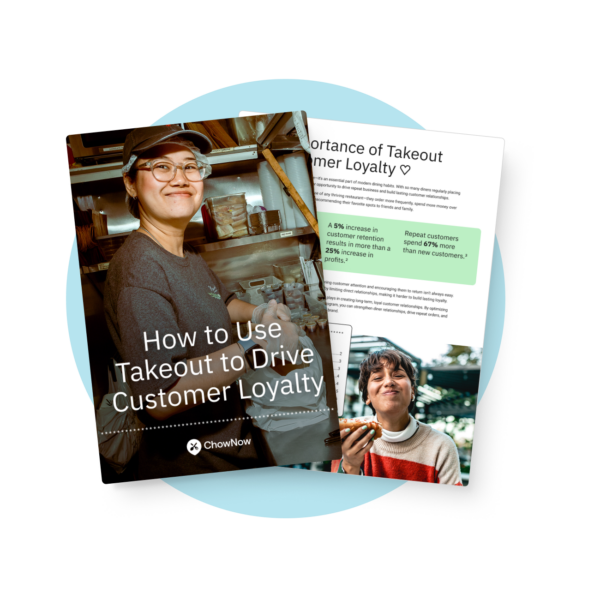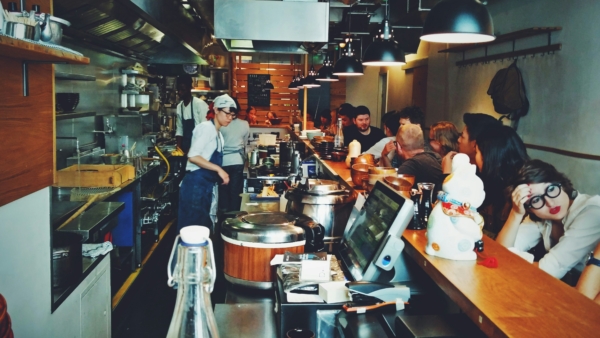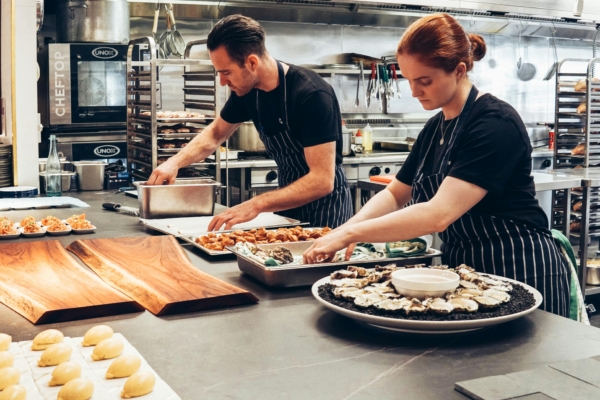Restaurant Failure Rate: Why Restaurants Fail And How To Make Yours Succeed

Running a restaurant is one of the most rewarding—yet risky—ventures out there.
You’re not just managing food and staff, you’re battling slim profit margins, high operating expenses, and constantly changing customer preferences.
And with the often-repeated stat that the restaurant failure rate is sky-high, it’s no wonder so many operators feel like they’re one bad month away from closing.
While the challenges are real, restaurant success is absolutely within reach, especially if you know what obstacles to avoid and the best strategies to overcome them.
In this article, you will learn:
- What the data really says about how often restaurants fail
- The most common reasons behind restaurant failure and how to avoid them
- The strategies successful restaurants use to beat the odds
Let’s start with what the numbers actually say and what they don’t.
The Numbers Can Be Misleading—But the Risks Are Real
You’ve probably heard the familiar line: “90% of restaurants fail in their first year.”
It’s one of those stats that gets thrown around a lot—usually by well-meaning friends or cautious investors, but here’s the thing: it’s not true.
The real numbers are dramatically different from the 90% urban legend. A study by two economists at UC Berkeley found that just 17% of restaurants fail in their first year, while around 80% fail within five years.
While the numbers aren’t great, it’s far from the apocalyptic picture people paint when someone talks about opening or operating a restaurant.
So why the disconnect?
Part of it comes from lumping together all service-providing businesses or misunderstanding what “failure” means.
Not every restaurant closure is due to a lack of demand; sometimes it’s burnout, a lease ending, or the owner simply moving on.
And while the odds improve with experience, restaurant ownership is still tough.
What the data doesn’t show is just how many of these restaurant closures come down to preventable issues, like:
- Poor financial management
- No marketing plan
- Lack of clarity around the restaurant’s concept
The key takeaway here is: failure is not inevitable.
The restaurant failure rate stats aren’t meant to scare you off; they’re meant to show you what’s at stake and why smart planning matters.
Because the truth is, most restaurants don’t close because of bad food.
They close because of business problems.
Why Restaurants Fail: Common Pitfalls and How to Avoid Them
A restaurant closing its doors is rarely caused by just one thing. Most of the time, failure comes from a mix of avoidable missteps that build up over time.
Let’s take a closer look at the leading causes of restaurant failure and see how you can avoid making the same mistakes at your restaurant.
Poor Financial Planning
The Issue: Underestimating startup costs, no cash flow buffer, and unclear budgeting.
Many restaurant owners go into business focused on recipes and decor, but overlook the financial reality of restaurant ownership.
It’s easy to underestimate how much money you’ll spend before you even open the doors, and it’s even easier to burn through cash without a solid plan.
Poor financial management is one of the leading causes of restaurant failure, especially for new restaurants that don’t yet have consistent foot traffic or reliable profit margins.
The Alternative: Understand spending fully, build a realistic financial plan, monitor expenses closely, and plan for seasonal changes.
Start with a detailed business plan that lays out every cost, from food costs and equipment to licensing and operating expenses.
Create a buffer for unexpected expenses and slow times. Your financial plan should reflect the actual cost of opening a restaurant in your local market, not a “best-case scenario.”
Once you’re up and running, track expenses weekly and make adjustments as needed.
When you know where your money is going, you’ll be in a much better position to stay in control and avoid becoming another restaurant failure rate statistic.
No Clear Business Model
The Issue: Opening without understanding what makes your restaurant business viable.
A lot of restaurant owners jump in with a great idea and a love for food, but with no real strategy for how their restaurant business will actually make money.
They open without fully understanding their target market, pricing structure, or what makes their restaurant’s concept stand out in the local market.
This lack of clarity leads to some of the most common early missteps: pricing that doesn’t cover food costs, a restaurant’s concept that doesn’t resonate with the neighborhood, or a menu that doesn’t match what customers want.
The Alternative: Validate your idea, clarify your customer base, and align pricing with your market.
Before you do anything like sign a lease or hire your wait staff, take the time to do real market research.
What kind of experience are they looking for?
How much are they willing to pay?
Who are your competitors, and how will you stand out?
A strong, clear business model aligns your food, pricing, branding, and service with what your target audience genuinely wants and they’re willing to pay for it.
It’s not just about having a cool vibe. It’s about knowing exactly why your restaurant type deserves to exist and how it will stay open.
Lack of Marketing and Visibility
The Issue: Hoping “if you build it, they will come.”
It’s a restaurant industry myth that all you need to fill your tables is great food and a good vibe.
The reality is that without visibility, even the best restaurant experience can go unnoticed, causing you to miss out on new customers and letting competitors take your place.
Too many restaurants rely solely on word of mouth or start their marketing efforts too late.
Other restaurants dump all their energy into social media, but forget that they don’t actually own that customer relationship—if the algorithm shifts, their social media presence disappears.
The Alternative: Prioritize local marketing, own your customer email list, and optimize your online listings.
Think of marketing as a core part of your operations, not an afterthought.
Start by collecting customer email addresses and grow a list that you control; that way, you’re not at the mercy of third parties. Using your email list, you can send promotional emails and updates as often as you’d like to stay connected with your customers.
Next, focus on building a strong social media presence and encouraging online reviews to create social proof.
When guests see that others are enjoying your restaurant, they’ll be more likely to check you out themselves.
Finally, make sure people can find you. Claim your Google Business Profile and keep your listings up to date on sites like Yelp and TripAdvisor.
These platforms often serve as a guest’s first impression, so make it count with high-quality photos, accurate info, and recent reviews.
Operational Inefficiencies
The Issue: Poor systems, inconsistent service, and staffing problems.
Many restaurants struggle not because of the concept, but because of inefficient workflows, lack of training, and day-to-day disorganization.
Long ticket times, incorrect orders, and inconsistent food preparation erode trust fast, and customers won’t keep coming back if your service doesn’t match their expectations.
Over time, this wears down both staff members and customers, leading to staff turnover, bad reviews, and lost revenue.
The Alternative: Improve workflows, invest in training, and use tools that make day-to-day business easier.
Start by tightening up your operations—create clear systems for everything, from opening checklists to inventory management.
Don’t assume your team knows what “good service” means—train for it, standardize it, and reinforce it regularly.
Invest in the right tools to support your staff and improve your workflows. That might include kitchen display systems (KDS), digital scheduling tools, or POS integrations that cut down on errors.
Better systems free up time and create a smoother experience for both your team and your customers.
Not Adapting to Customer Feedback
The Issue: Ignoring feedback from reviews or trends in customer behavior.
Restaurant owners often get so focused on execution that they overlook what customers are actually saying.
Whether it’s online reviews, in social media comments, or in simple face-to-face conversations, feedback is a direct window into how your restaurant is performing and what might be pushing people away.
When you dismiss criticism or resist adjusting to new trends or customer preferences, you risk losing relevance, and that can sometimes mark the beginning of the end.
The Alternative: Monitor feedback and reviews, respond professionally, and be open to making adjustments.
Take the time to regularly read your reviews on platforms like Google and Yelp. Look for patterns instead of getting hung up on one-off complaints.
Are people saying service is slow?
Is a once-popular dish suddenly getting lukewarm reviews?
Feedback is free market research. It tells you where you’re falling short and where you’re exceeding expectations.
Use this information to make smart adjustments to your menu items, pricing, or food quality.
And don’t just listen—respond.
A thoughtful, respectful reply to a negative review shows you’re paying attention and committed to improvement.
Remember, everyone sees your response, not just the person you’re responding to.
The best restaurant experiences evolve. Listening to your customers is one of the simplest, most powerful ways to stay relevant and keep people coming back.
Burnout or Lack of Leadership
The Issue: Trying to do everything yourself or not building a reliable team.
Many restaurant owners fall into the trap of trying to do everything themselves. They work long hours, skip days off, and never delegate until exhaustion and poor leadership start affecting the team and service.
When there’s poor leadership or unclear direction, even the best staff can feel lost.
Without a strong, consistent presence at the top, staff members are more likely to leave, standards slip, and restaurant failure becomes more likely.
The Alternative: Delegate when possible, set boundaries, and build a team you can trust.
Success in the restaurant industry is about more than hustle—it requires structure.
That starts with building a team you can trust, clearly defining roles, and letting go of tasks you don’t need to handle yourself.
Delegating isn’t a weakness; it’s how you grow.
Set boundaries to protect your time and energy, invest in your managers, and create systems that allow the restaurant to run smoothly when you’re not there.
A strong team culture and clear leadership are necessary not just for day-to-day operations but for long-term restaurant success.
Yes, the Odds Are Tough—But You Have the Power
The truth is, while many restaurants fail, the reasons why they do are often preventable and predictable. So long as you plan ahead and keep an eye on your numbers and operations, your restaurant has every chance to succeed.
Contact ChowNow to learn how an Online Ordering System with built-in Marketing Tools can help set your restaurant up for long-term success.
Restaurant Failure Rate Frequently Asked Questions
What is the restaurant failure rate?
Contrary to the myth that 90% of restaurants fail in the first year, data shows that about 17% close within their first year and around 80% within five years. While the risks are real, many closures are preventable with the right planning.
Why do most restaurants fail?
The most common reasons restaurants fail include poor financial planning, lack of marketing, an unclear business model, operational inefficiencies, and failure to adapt to customer feedback.
Is it true that bad food is the main reason restaurants fail?
Not typically. Most restaurants don’t fail because of bad food—they fail due to business and operational challenges like poor cash flow management, unclear pricing strategies, or lack of customer visibility.






